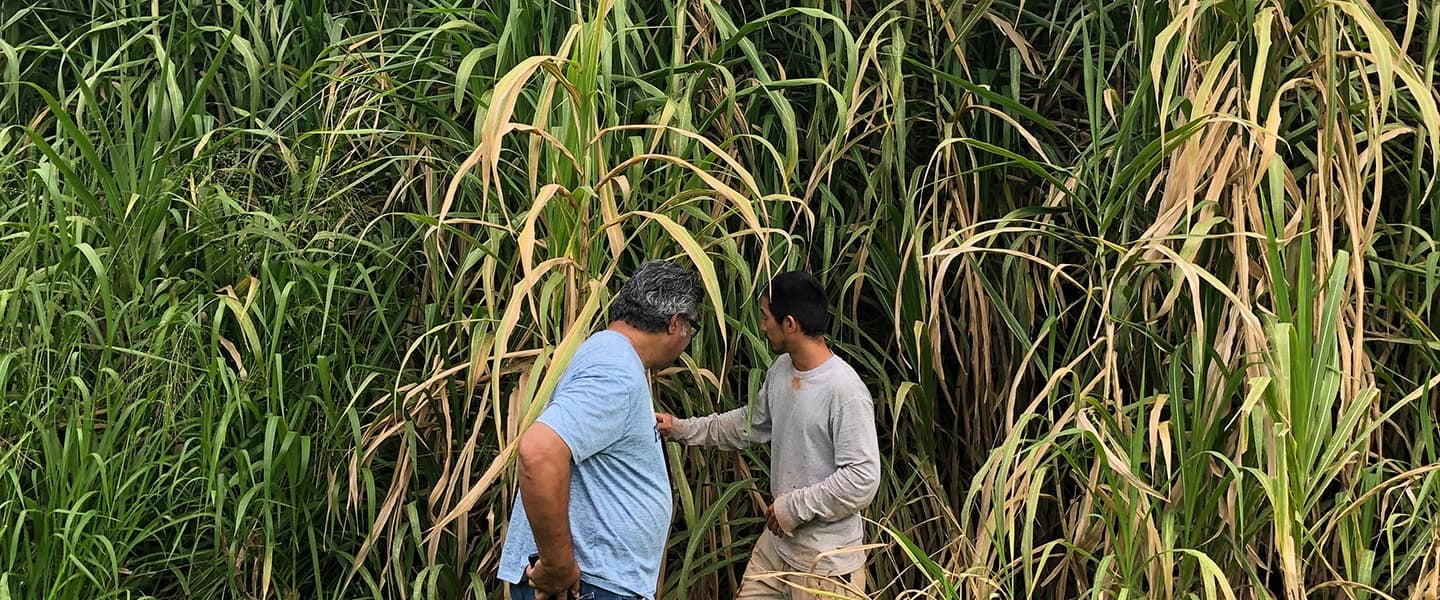At Castle High School in Kaneohe, Hawaii, FFA members get hands-on experience in production agriculture while also contributing to a project showcasing the potential of bana grass as a renewable energy source.
Through a partnership with SUMA Farms, a Honolulu-based, wholly owned subsidiary of biofuel company Bana Pacific, Castle FFA grows propagative units of bana grass (also known as elephant grass) on about a half acre of the chapter’s on-campus farm.
Bana grass, a natural hybrid biomass crop that has existed in Hawaii since the mid-1970s, has the potential to significantly reduce the state’s dependence on imported fossil fuels. Castle FFA was eager to be part of the groundbreaking project.
“This partnership grew out of SUMA Farms’ desire to work toward Hawaii Governor David Ige’s goal of increasing renewable energy sources in our state,” says Castle FFA Advisor Carlos Kaukahi Severson. “It made perfect sense for our chapter to participate as a propagation nursery because it’s a great way to help students understand the importance of sustainability and the role agriculture can play in it.”
The Castle High School bana grass is grown until it reaches 13-16 feet, then the stalks are cut down mechanically and trimmed into smaller pieces called billets or cuttings that are used for replanting by partner farms and growers contracted by SUMA Farms.
When bana grass is harvested as a feedstock, it’s chopped into 1-inch clippings, placed into a digester and converted to renewable natural gas by a naturally occurring biological process called anaerobic digestion.
“Inoculated with natural microbes, the macerated grass clippings are naturally broken down in the digester, producing a renewable natural gas that can be used in place of fossil fuels,” Severson says. “All of the by-products are usable as fertilizers, so nothing is wasted. Essentially, bana grass is a three-in-one sustainable product: fuel, fertilizer and fodder, as it can also be used to feed livestock.”
Through the bana grass project, FFA members are learning more about sustainability and renewable energy, and Severson says it has also shown students the potential market for bana grass and how it can serve farmers across the state.
“As a tropical crop, bana grass thrives in Hawaii, and because it’s a low-maintenance plant that doesn’t much require much fertilizer, it’s easy for farmers to incorporate it into their operations,” Severson says. “Recently, SUMA Farms has started contracting with local farmers to grow bana grass on their unused lands, which helps subsidize farmers’ incomes while continuing to further our state’s commitment to producing renewable energy — a win-win situation.”












